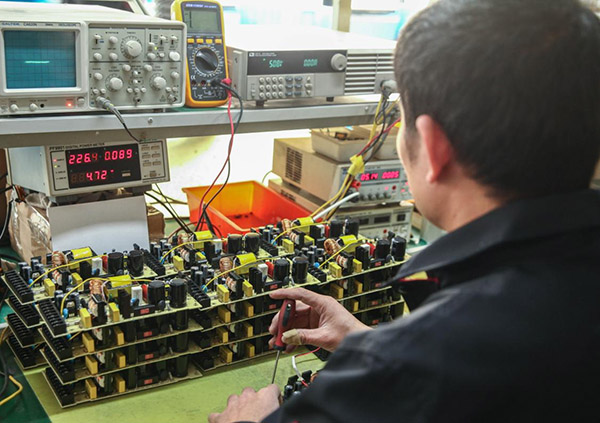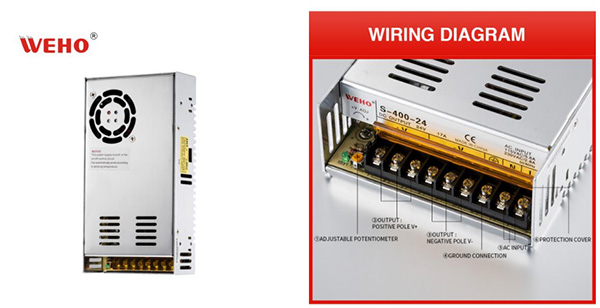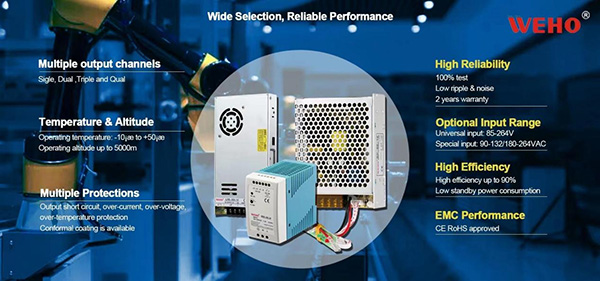When it comes to electronics, from voltage to wattage to efficiency, there are many factors to consider to ensure your device is powered properly. Many consumers are often confused by the various ratings and what they actually mean. That’s why we’ve created this comprehensive guide to demystify power supply ratings and give you everything you need to know!
Understanding power supply ratings
To understand power supply ratings, it’s important to be familiar with the key terms and concepts associated with them. Your most common ratings are voltage, amperage, and wattage.
Voltage refers to the magnitude of the potential difference between two points in a circuit. It is measured in volts (V) and determines the level of electrical energy flowing through the device.
Electric current, on the other hand, is the flow of electrical energy through a circuit. It is measured in amperes (A) and represents the rate at which charges, such as electrons, move through a conductor.
Wattage is the product of voltage and current, and it measures the amount of power a device or circuit can handle or deliver. It is expressed in units of watts (W) and determines how much work electrical energy can do.
Efficiency is another important factor to consider when it comes to power supply ratings. It shows how efficiently the power supply converts input electrical energy into useful output power. Higher efficiency ratings mean less energy is wasted in the process, resulting in a more efficient and cost-effective power supply.

What do the ratings mean?
Rated voltage determines the level of potential difference required for a specific device to operate properly. It is important to ensure that the voltage rating of your power supply meets or exceeds the voltage requirements of your electronic equipment. Using a power supply with a lower voltage rating may not provide enough power, while using a power supply with a higher voltage rating may damage your equipment.
The current rating represents the amount of electrical energy the power supply can deliver to your device. It is critical to select a power supply with an ampere rating that meets or exceeds the requirements of your equipment. Using a power supply with a lower current rating may result in insufficient power supply, while using a power supply with a higher current rating will not harm your equipment, but is not necessary.
Power rating indicates the maximum power a power supply can handle or deliver. It is determined by multiplying the rated voltage and rated current. It is critical to select a power supply with a power rating that meets or exceeds the power requirements of your electronic equipment. If the power supply cannot handle the required power, it may not be able to power your device effectively or even cause damage.
By understanding the importance of voltage, current, and power ratings, you can confidently select a power supply that is compatible with your device and meets its power requirements.
Calculating power requirements for your devices
To calculate power requirements, you need to consider two factors: the voltage and current requirements of the device. Start by determining the voltage and current ratings specified by the manufacturer. This information can usually be found in the device’s user manual or label.
Next, determine the power consumption of each device by multiplying the voltage rating and current rating. For example, if the device requires 12 volts, 1.5 amps, the power consumption will be 18 watts (12 volts x 1.5 amps = 18 watts).
Repeat this calculation for all devices and add the total power consumption. This will give you an idea of the minimum power rating your power supply should have. It is important to choose a power supply with a power rating that exceeds the total power consumption of the device. This will ensure that your power supply can handle the load and provide enough power for all devices to function properly.

Factors to consider when choosing a power supply
Now that you know how to calculate your device’s power requirements, it’s time to dive into the factors you should consider when choosing a power supply. To ensure optimal performance and reliability of your equipment, keep these key factors in mind:
Power and Efficiency: The power supply’s power rating should exceed the total power consumption of the device (as calculated in the previous section). Additionally, look for power supplies with high efficiency ratings because they convert more of the input electrical energy into usable energy.
Voltage and current output: Make sure the power supply provides the required voltage and current output to meet your device’s specifications. Before selecting a power supply, it is crucial to carefully check the voltage and current ratings of the device.
Connectors and Cables: Take note of the connectors and cables your device requires. Make sure the power supply you choose has the right connectors and cables required for your device.
Safety features: Look for power supplies with built-in protection features such as overvoltage protection, short circuit protection, and thermal protection. These features help protect your equipment from unexpected power spikes or failures.

Finding out if any environmental factors affect the performance of your power supply
When ensuring your equipment is operating at peak performance, it is important to consider any environmental factors that may affect the equipment. This is especially true for power supplies, which can be affected by a range of variables including temperature, humidity and airflow.
By taking the time to investigate these factors, you can better understand how your power supply works and make the necessary adjustments to ensure you get the most out of your equipment. Whether it’s monitoring room temperature or adjusting fan speeds to improve airflow, taking a proactive approach to assessing the performance of your power supply can go a long way toward ensuring your equipment stays up and running with minimal disruption.

Conclusion
Learning about any overload protection and safety features of your power supply is necessary to ensure your device will last for years to come. Overall, having an understanding of each aspect involved in a power supply rating is key for selecting the best one for your PC builds. Let me know your opinions in the comments below or send an inquiry to us – we look forward to hearing from you soon!








